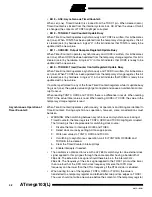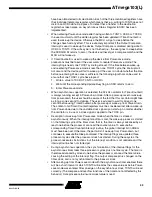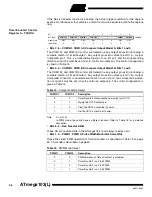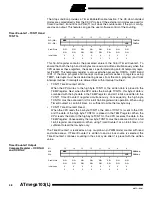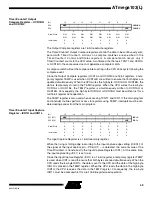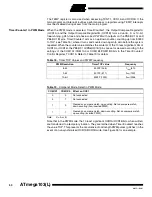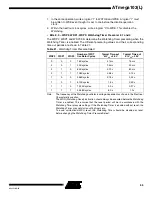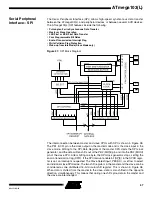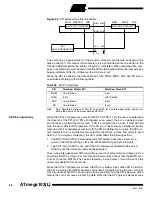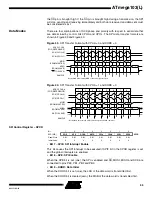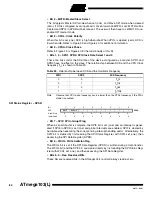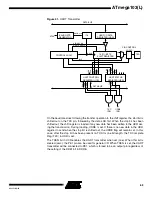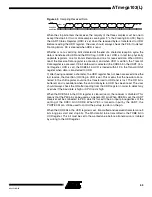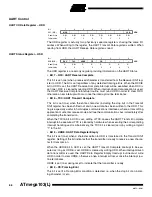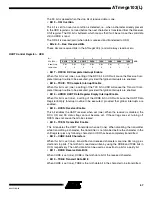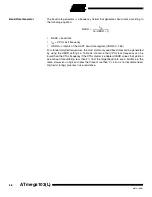
56
ATmega103(L)
0945G–09/01
Prevent EEPROM
Corruption
During periods of low V
CC
,
the EEPROM data can be corrupted because the supply volt-
age is too low for the CPU and the EEPROM to operate properly. These issues are the
same as for board-level systems using the EEPROM and the same design solutions
should be applied.
An EEPROM data corruption can be caused by two situations when the voltage is too
low. First, a regular write sequence to the EEPROM requires a minimum voltage to
operate correctly. Second, the CPU itself can execute instructions incorrectly if the sup-
ply voltage for executing instructions is too low.
EEPROM data corruption can easily be avoided by following these design recommen-
dations (one is sufficient):
1.
Keep the AVR RESET active (low) during periods of insufficient power supply
voltage. This is best done by an external low V
CC
Reset Protection circuit, often
referred to as a Brown-out Detector (BOD). Please refer to application note “AVR
180” for design considerations regarding power-on reset and low-voltage
detection.
2.
Keep the AVR core in Power-down Sleep Mode during periods of low V
CC
. This
will prevent the CPU from attempting to decode and execute instructions, effec-
tively protecting the EEPROM registers from unintentional writes.
3.
Store constants in Flash memory if the ability to change memory contents from
software is not required. Flash memory cannot be updated by the CPU and will
not be subject to corruption.

